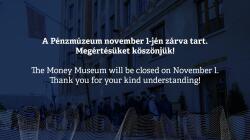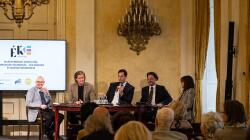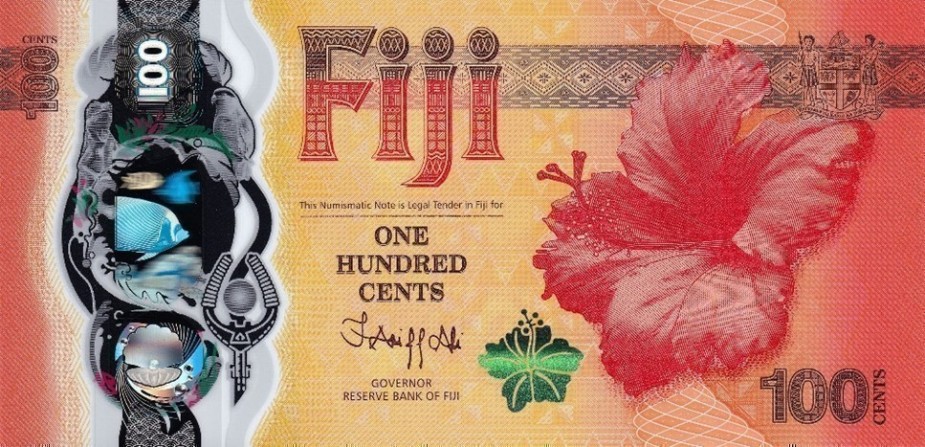
There are many beautiful numismatic treasures to be found around the world. Banknotes stand out because their size gives them more possibilities, making them more ornamental and they offer greater potential than a coin, for example. They are made of two types of material, the most well-known being paper, which is the most widely used worldwide, but in recent years the use of polymer, or polypropylene, has become increasingly popular. It is the preferred material in more than 30 countries because it has proven to be more durable than its paper counterpart. Sometimes a combination of the two materials is used.
Apart from the visuals, the most interesting details of banknotes are their security features. For example, paper banknotes may contain special security metallic threads, holograms, watermarks, or tracers that are visible only in ultraviolet light. Similarly, polymer banknotes have these elements, but the use of the material makes them more ornate than on paper. Yet the most prominent features of these banknotes are the transparent windows and holograms. As well as being attractive, they are also extremely useful from a security point of view, as they make counterfeiting more difficult.
For the Year of the Dragon, a Chinese Lunar New Year banknote issued by Fiji in the form of a 100-cent note this year, making it one of the numismatic curiosities of the year. The banknote is made from the newly popular polymer material and has these features. It sports a three-part holographic window strip depicting Fiji's flora and fauna, and the "100" denomination in gold. Interestingly, the holographic part features a technique called Spotlight, which produces pyramidal leaf shapes that rotate in opposite directions. On the reverse, the message "Good luck in the year of the dragon" appears, visible only in ultraviolet light.

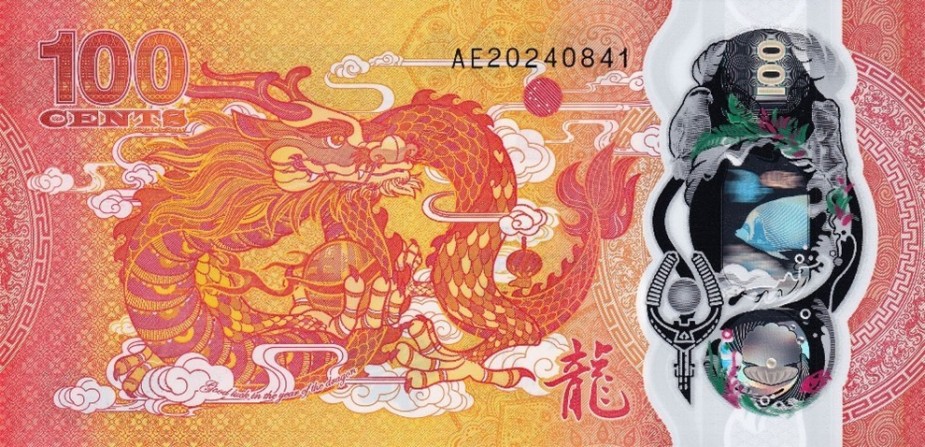
Two years ago, the banknote of the Philippines was voted the most beautiful in the world. It features the endangered Philippine eagle and a holographic representation of the Arabian jasmine, the country's national flower. The hologram in the transparent window shows the Philippine coat of arms, the denomination of the banknote (1000 pesos) and the logo of Bangko Sentral ng Pilipinas. On the reverse is the Tubbataha Reefs Natural Park (UNESCO World Heritage Site), a map of the country and the South Sea pearl. This is the first polymer banknote issued in the Philippines.
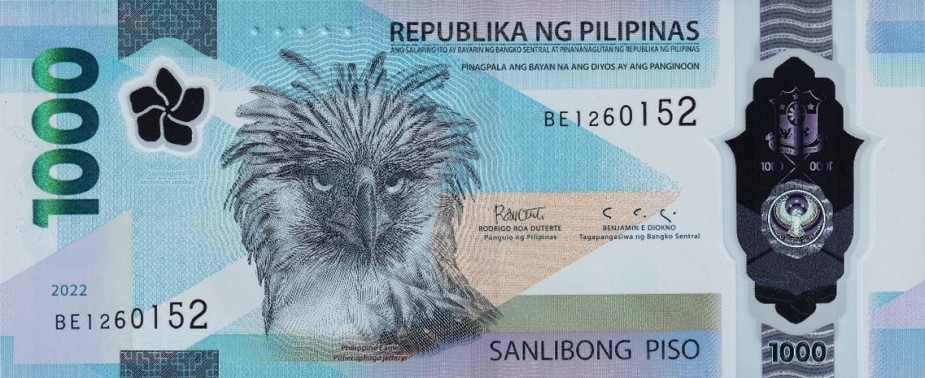
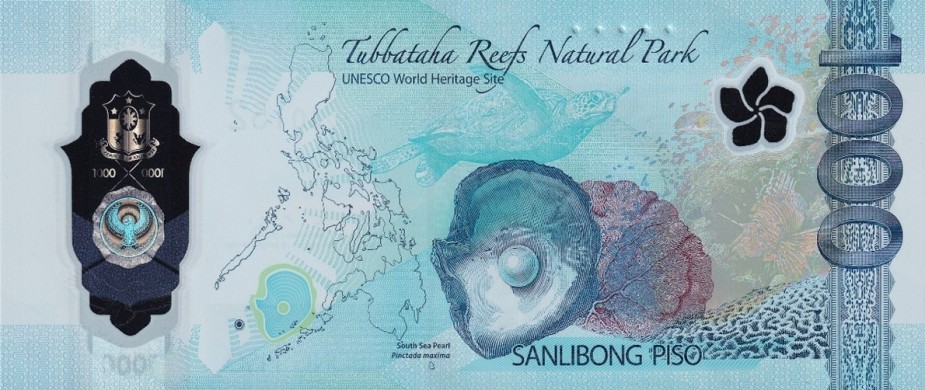
The following banknote was voted the most beautiful banknote in the world in 2019, which makes sense for several reasons. The vertical format is a distinct rarity in the world of banknotes, drawing its elements from the flora and fauna of Aruba's culture. It features their indigenous lizard the striped anole, women dancing in indigenous dresses and the leaves of the aloe plant, which is one of the mainstays of their economy. They also use several interesting banknote security features, such as high relief printing, watermarks, colour-changing ink, EURion star constellation, Motion Surface, a 3D moving strip with miniaturised images. The banknote is worth 100 florins.
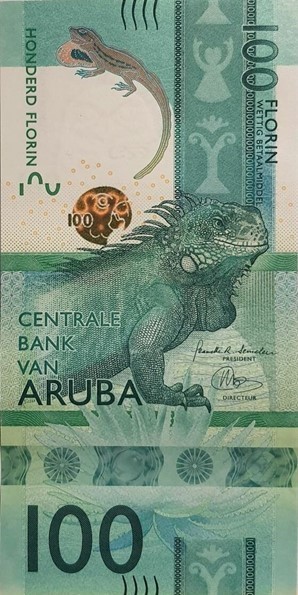
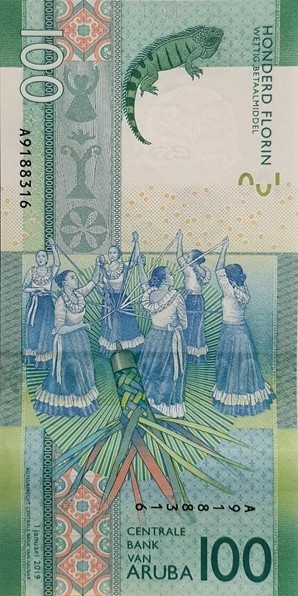
The annual World's Most Beautiful Banknote competition is organised by the International Bank Note Society (IBNS), where the winner is chosen by vote. Polymer banknotes are favoured, as they are very popular with both the judges and the voting public.
Sources:
https://en.numista.com/catalogue/note373808.html
https://www.coinworld.com/news/paper-money/fiji-releases-year-of-the-dragon-commemorative-bank-note
https://en.numista.com/catalogue/note316600.html
https://regulaforensics.com/blog/most-beautiful-banknote-holograms/#philippine-peso-2022
https://en.numista.com/catalogue/note212042.html
Image sources:
https://en.numista.com/catalogue/photos/fidji/653b6e9610ae52.75063936-original.jpg
https://en.numista.com/catalogue/photos/fidji/653b6e97869ed8.58949533-original.jpg
https://en.numista.com/catalogue/photos/philippines/65a6c375d2b762.69052079-original.jpg
https://en.numista.com/catalogue/photos/philippines/65a6c378306e06.49821106-original.jpg
https://en.numista.com/catalogue/photos/aruba/646527c2bf4bd5.54976310-original.jpg
https://en.numista.com/catalogue/photos/aruba/646527c3345343.96383844-original.jpg
Further news
All newsThank you for your kind understanding!
Roundtable discussion at the 2025 Exhibition of the Year awards ceremony and professional conference
The event was held on October 16 at the Ludovika Sports Hall.
Thank you for you kind understanding!
Thank you for your kind understanding!
Roundtable discussion at the 2025 Exhibition of the Year awards ceremony and professional conference
The event was held on October 16 at the Ludovika Sports Hall.
Thank you for you kind understanding!
